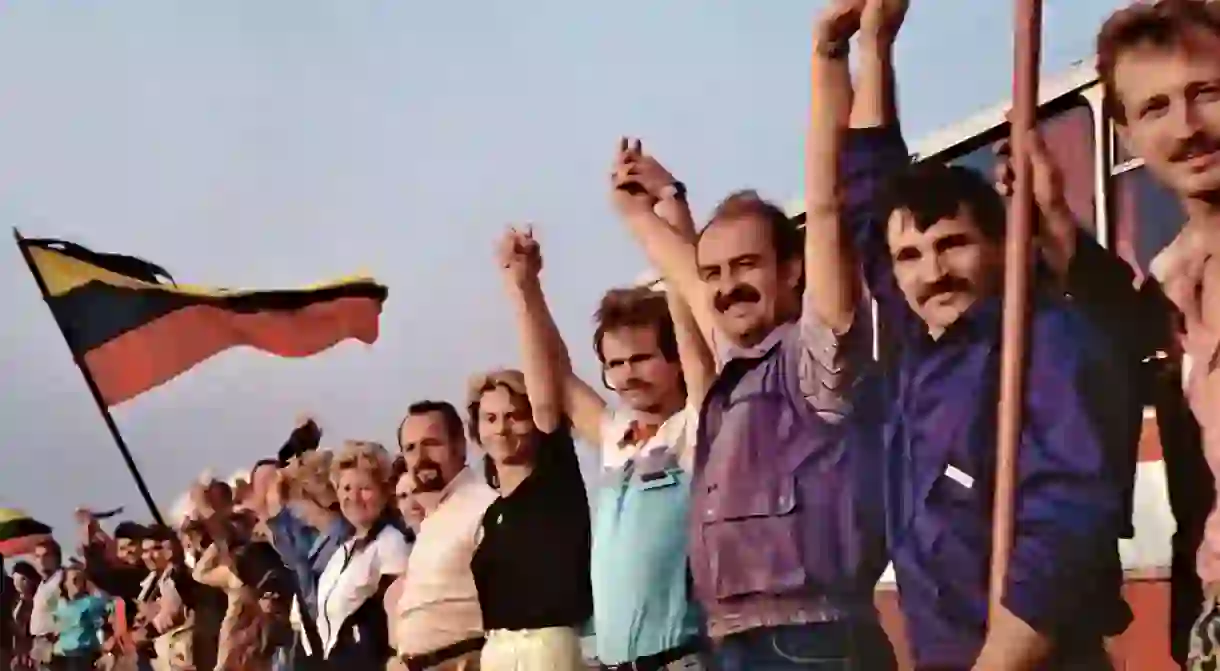The Baltic Way: The Day 2 Million People Held Hands for Freedom

The Baltic countries were occupied by the Soviet Union for half a century, but the Balts never lost their desire to be free again. Eventually, patriots of Lithuania, Latvia, and Estonia started defying the repression of the Soviet Union and fought hard for their freedom. One of the most iconic events was the Baltic Way on August 23, 1989. The Baltic States stated that they wouldn’t stay in the Soviet Union any longer and formed a chain of two million people in a peaceful protest, which is today remembered as a defining moment of Lithuanian, Latvian, and Estonian history.
https://www.instagram.com/p/BYJgQu1gejn/?tagged=balticway
Background
The government of the Soviet Union denied the existence of the secret protocols of the Molotov–Ribbentrop Pact, signed on August 23, 1939, even though the Western world had widely published those protocols a long time ago. As the 50th anniversary of Molotov-Ribbentrop Pact was approaching, the tension between the Soviet Union and the Baltic States kept increasing. By that time, the Balts already showed their patriotism numerous times, especially during the Singing Revolution.

The Soviet Union, of course, tried to suppress the nationalist aspirations of the Balts, but it was too late – on August 22, 1989, a Supreme Soviet commission of the Lithuanian SSR declared that the Soviet occupation in 1940 was illegal because it was based on the Molotov-Ribbentrop Pact. The next day, millions of peaceful Latvians, Lithuanians, and Estonians marched into the streets to form the Baltic Way.
https://www.instagram.com/p/BJdyk5egZLq/?tagged=baltijoskelias
A human chain of freedom
On August 23, 1989, over two million patriots from Estonia, Lithuania, and Latvia joined their hands and formed a 675.5-kilometer-long (419.7 mi) chain of humans across all Baltic States from Vilnius to Riga to Tallinn.

This peaceful event symbolized the unity of all Baltic States and the same goal – to regain the rightful independence. There were only 5.34 million Balts living in the Soviet Union in 1989, meaning that almost half of them were holding hands in the streets on that iconic day. In fact, everyone from the smallest kid to the wisest old man took part in the Baltic Way. It was a matter of dignity, unity, and complete freedom.

The Baltic Way was a clear sign that the Soviet Union had no more power to control the Baltic States, so it was only a matter of time until Estonia, Latvia, and Lithuania became independent again.
The Balts won
The Baltic Way was eventually broadcast all over the world, and the Baltic States became the heroes of that time. People admired the courage and patriotic ideas among Lithuanians, Latvians, and Estonians, and that is why the Soviet Union’s government was unhappy. They even called the Baltic Way “nationals hysteria” and asked the nation to help in a fight against all the nationalists whom they said were about to cause chaos and destruction.
https://www.instagram.com/p/BYJNzj-gSBf/?tagged=baltijoskelias
However, the government of the Soviet Union had clearly lost their hold on power, and Mikhail Gorbachev had no other choice than to condemn the secret protocols of the Molotov–Ribbentrop Pact in December 1989. This was a small victory for the Baltic States, because it showed that the Soviet Union acknowledged the fact that the occupation was illegal.
https://www.instagram.com/p/BPNMlBCjyk1/?tagged=baltijoskelias
One thing led to another, and on March 11, 1990, Lithuania became the first Baltic country to declare its independence. Latvia and Estonia followed soon thereafter. Today, the Balts remember how proud and hopeful they were on that decisive day on August 23, 1989. Today, the Balts can enjoy their freedom because their parents were brave enough to peacefully stand against the occupiers.

Boris Rezņik composed the joint anthem of the Baltic States, “The Baltics Are Waking Up” during the fights for independence. Today, after 28 years, people still connect with this song recorded by Žilvinas Bubelis, Viktors Zemgals, and Tarmo Pihlap,













